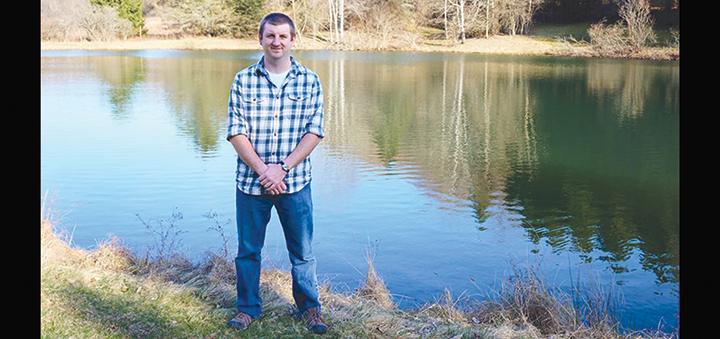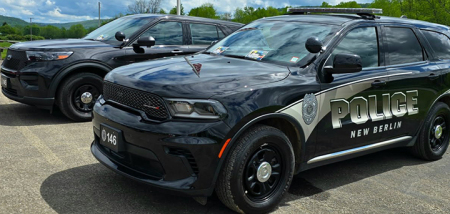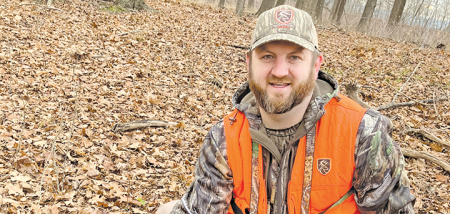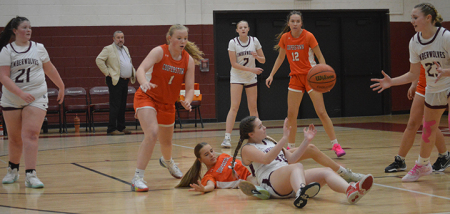Choosing The Right Kayak
Published:
June 3rd, 2020
By:
Eric Davis
 Evening Sun File Photo
Evening Sun File Photo
Now that June is here, I think it is safe to start thinking about the summer without too much worry about cold temperatures, or even snow. A popular warm weather activity is kayaking.
Whether floating down a river or paddling around a lake or pond, spending time right at the water’s surface can be relaxing and relieve stress. However, if you are ill-prepared when you go to the store, you could end up with a kayak that is not best suited for what you are doing. The store likely has multiple options to choose from, but how do you know what to pick?
Kayaks can be easily split into two categories: sit-in and sit-on. Sit-in kayaks have an opening on the top where you slide your feet and legs in before sitting on the seat. Your lower body ends up encapsulated by the kayak. This type of kayak allows you to ride lower that most sit-on kayaks while keeping you mostly dry. Many sit-in kayaks will have at least one air-tight compartment where you can put valuables and electronics, so they will not get wet.
A common worry people have with sit-in kayaks is that if the kayak capsizes, they will not be able to get their legs out of the kayak and will be stuck underwater. Sit-on kayaks are kayaks where your legs and feet stay on top of the kayak when you are using it. Sit-on kayaks ride higher than sit-in kayaks so they can feel light they want to tip over more but allow you to go through shallower water without getting stuck on the bottom. Most sit-on kayaks have some holes around the seat in them to allow some water to displace up through when the user sits on the kayak, so the user typically ends up with a wet rear end.
In addition to choosing the style of kayak, you will also need to choose a hull length for your kayak. Many youth kayaks come in lengths under 10 feet. This allows for a lighter boat, so paddling is easier for young arms. With a good amount of weight in them, short kayaks do not track very well. Tracking refers to the kayak’s tendency to stay straight if you stop paddling while moving forward. A kayak that does not track well will zigzag with every stroke of the paddle, making the user must paddle more to keep it straight and getting tired sooner. For long excursions, 14 and 16-foot models make for easier paddling as they glide through the water and track better. If you get too long of a kayak, you may have difficulty maneuvering in and around obstacles such as stumps or downed trees. The go-to length for around our area would be either 10 or 12 feet. If you are thinking of doing some camping out of your kayak (available at a few lakes in the Adirondacks), a longer kayak will have more cargo space than a shorter one.
The third thing to ponder is what are you planning to do with the kayak because there are some specialized models on the market. The main one that comes to mind is fishing kayaks. These kayaks come outfitted with varying degrees of bells and whistles for those planning to fish out of them. The simplest ones have a couple of rod holders and some storage of gear and tackle. Higher end models come with battery compartments and fish finder mounts preinstalled. While these models are designed to make fishing in the kayak easier, it is possible to fish out of a “regular” kayak (I do).
Once you have your kayak picked out, make sure you purchase a personal floatation device (or PFD) and the correct paddle. There are PFDs designed for paddling as the standard Type III PFD will chafe if you wear it while paddling for a few hours. Make sure the PFD is snug, you want to make sure it will not come off if you fell into the water and were knocked out. The paddle you use is based on your height. The wrong paddle can lead to fatigue or increase your odds of tipping over. A fast and easy way to test the paddle length fit is to stand the paddle up and put your arm up. Your fingers should wrap over the end of the paddle about halfway. If you can bend your wrist over the end of the paddle, it is too short. If you cannot get your fingers to the end of the paddle, it is too long.
Armed with this information, you can head to the store with a potential plan on what you are looking for before you get there.
Author: Eric Davis - More From This Author
Comments





